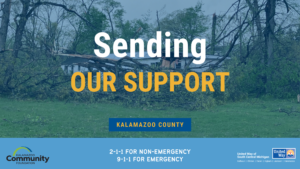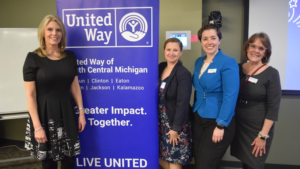This is part of a series of blogs spotlighting the ALICE population and how our community can make a difference.
Poverty and racism have been inextricably connected since this country’s inception, yet official federal statistics have never fully portrayed the economic impact of that link.
United For ALICE, an initiative through United Way Worldwide, was founded on the need to more accurately measure and track financial hardship nationwide. For more than a decade, research has been shedding light on the disparity of economic opportunity that exists in every state. The data show that while hardship is pervasive, the history of slavery and its ongoing legacy of systemic and institutional racism stigmatizes Black households uniquely.
In Michigan, analysis of the actual cost of living in every county shows that 40% of all households do not earn enough to cover basic expenses, including housing, child care, food, transportation, health care, and a basic smartphone plan. In Jackson County, that number is 42%. This gap between wages and the cost of living is a structural economic problem in Michigan and nationwide.
Yet for Black households, that number is much higher: 63% of Black households in Michigan are unable to afford basic household essentials in their communities. This is almost three times the rate of hardship shown for Black households by the antiquated and arbitrary Federal Poverty Level (FPL). And it is almost twicethe rate of hardship for White households.
From 2010 to 2018 — which covers the “recovery” from the Great Recession — the number of Black households below the ALICE Threshold (the minimum income needed to afford household basics) increased by 11%, while the number of White households struggling to make ends meet increased by only 1% in Michigan. This is before the impact of COVID-19.
Black people are contracting COVID-19 at higher rates and dying at higher rates than their White counterparts. These disparities are being fed by multiple factors:
- As noted above, Black households are more likely to face financial hardship.
- Black families remain disproportionately likely to live in substandard housing in neighborhoods of concentrated poverty — those with few grocery stores, banks, parks, or recreation facilities, with inadequate health care services and under-resourced public schools, and with high levels of violence and exposure to environmental hazards.
- Black households and communities have long faced institutional barriers to quality health care.
Improving the plight of all households that fall below the ALICE threshold means we must tackle the historical racial inequities that plague communities of color.











